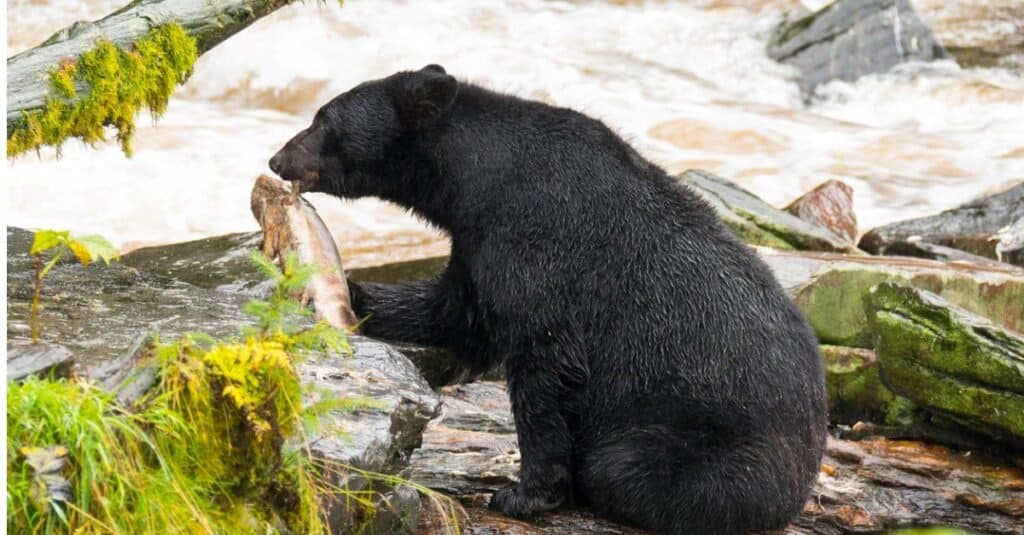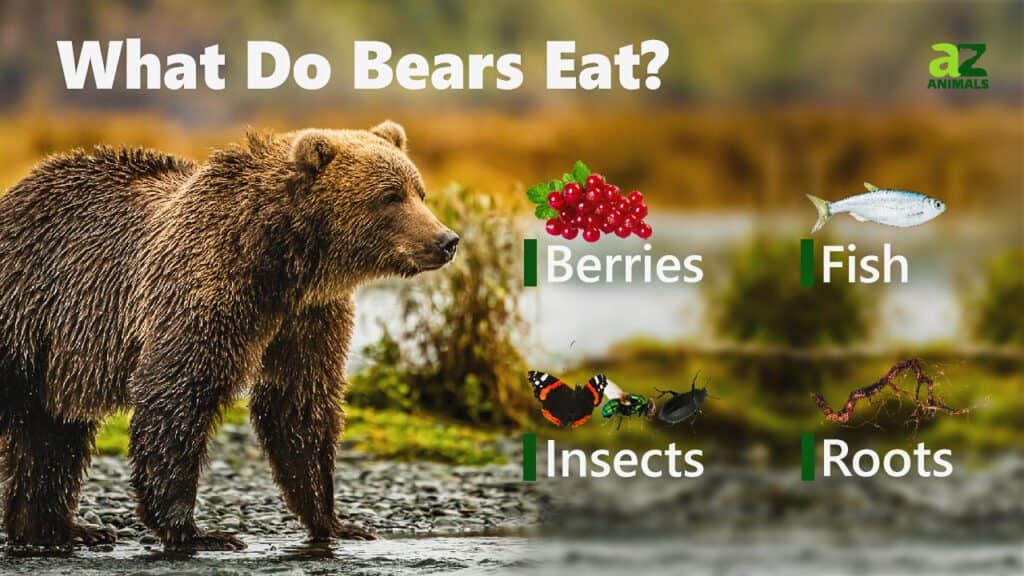The black bear’s scientific name is Ursus americanus, which means “American bear.” And although there are three species of bears in North America, many wonder if there are bears in Pennsylvania. In 2015, the population of bears in the state was around 20,000. In the most recent report by Pennsylvania Game Commission, more than 16,000 black bears live in Pennsylvania. Black bears seem to be heavy, yet they are surprisingly agile, capable of running up to 35 mph, climbing trees, and swimming well. In the wild, they can live up to 25 years.
Slowing down for animals crossing the road and seeing plenty of wildlife in the community are ordinary interactions for residents of Pennsylvania. Black bears have become more prevalent in recent years in neighborhoods and backyards around the state. While a black bear may appear adorable going into a hot tub or swimming in a pool, there are some precautions you should take to keep yourself and your pets safe. Below, we’ll learn more about Pennsylvania’s black bears, including their habitat, food, and other fascinating facts.
Are There Bears in Pennsylvania?

Black bears are present in Pennsylvania.
©BGSmith/Shutterstock.com
The quick answer is yes, but only black bears are present in the state. The black bear, Ursus americanus, is among the most secretive and largest animals in Pennsylvania. For some residents in Pennsylvania, black bears have become a familiar sight. Black bears have diverse life cycles, denning times, tolerance of human activities, habitat preferences, movement patterns, reproduction behavior, pelt colors, and even height and weight, depending on where they live. From Mexico to Alaska and from Florida to northern Canada, the species thrives in forested areas of North America.
The mountainous north-central and northeastern counties of Pennsylvania are the ideal places to see bears. On the other hand, bears have expanded their range and now thrive in 50 of Pennsylvania’s 67 counties. Bears have adapted well to the expansion of human settlement and even live in suburban settings. They may scavenge for food in dumpsters at rest stops, restaurants, campgrounds, and in garbage cans at homes. Bear habitat in Pennsylvania is typically mixed hardwood forests. Contiguous woods with bogs, marshes, mountains, and a well-established forest understory make up prime bear habitat.
What Do Bears in Pennsylvania Look Like?
Black bears, despite their common name, are not necessarily black. They could be cinnamon or even blond. A white blaze or “V” can be seen on the chests of many bears. Adults typically average around 200 pounds, with males often weighing more than twice as much as females. Some can weigh up to 600 pounds and even 900 pounds in exceptional cases. Boars are males, and sows are females. When on all fours, black bears stand around three feet tall, and five to seven feet tall when standing erect.
Black bears have large, more pointed ears than other bears. Because black bears eat so little meat, their teeth do not need to be as sharp and scissor-like as those of meat-eating animals like wolves and cats. Each side has two molars on top and three on the bottom.
Where Are Bears Found in Pennsylvania?

Some black can weigh up to 600 pounds.
©iStock.com/ElliotHurwitt
Bears can be found throughout Pennsylvania in big forested areas. They now cover more than three-quarters of the state, with sightings reported in every county. Large metropolitan regions and agricultural areas, such as the southeastern corner of Pennsylvania and parts of the western border, do not have enough forest habitat, therefore bears spotted there are primarily temporary. The current population is believed to be around 18,000, yet there were fewer than 5,000 in Pennsylvania in the 1970s.
Bears provide recreation for hunters, wildlife photographers, and those who enjoy viewing animals. Therefore, many Pennsylvanians respect their presence. Bears can also serve as an indicator of ecological health, a symbol of the wilderness, and a source of revenue. Bear numbers in Pennsylvania were once dangerously low. However, bear abundance and distribution have expanded dramatically in recent decades, and bears are now seen in record numbers across much of the state. Their resurgence is a success story for nature, but as bear populations grow and more humans opt to live in bear-infested areas, human-bear confrontations will increase as well. Bear populations are managed through regulated hunting, where hunting seasons are set such that populations with more human-bear conflicts are minimized or maintained, while areas with few conflicts are permitted to increase.
What Do Bears Eat?

Bears are omnivorous and consume nearly anything, including berries, grain, acorns, beechnuts, grass, table scraps, carrion, honey, and insects. This diet also includes beetles, ants, and bees. Bears are drawn to beehives, especially when they emerge from hibernation in the spring and when honey production is highest in the late summer and fall. A bear may damage multiple beehives to get at the honey and bees.
Bears can be encountered at any time of day or night, but they are most active at dusk and dawn. Black bears gain weight in the late summer and fall in preparation for their winter hibernation. They can feed for up to 20 hours a day during this period, consuming up to 20,000 calories. In Pennsylvania, intentionally feeding bears is illegal. It is also unlawful to set out any food for wildlife that causes bears to congregate or become accustomed to a particular place.
Are Bears Dangerous in Pennsylvania?
Black bear attacks are uncommon, especially when compared to attacks by other bear species, but these creatures are nevertheless dangerous. Although black bears are typically cautious and avoid human interaction, do not underestimate their size and strength. A black bear’s biting force (975 PSI) is powerful enough that it may kill numerous species by digging its 2.5-inch fangs into a crucial spot. Never purposefully approach a bear or attempt to lure one closer. Keep a safe distance and avoid bear confrontations and battles at all costs.
With an estimated 18,000 black bears wandering across most of Pennsylvania, your odds of seeing a bear are higher now than at any other time in the state’s history. The good news is that, according to the Pennsylvania Game Commission, there were no fatal attacks in the state in the last century. The first one was recorded in New Jersey in the fall of 2014, near the state line with Pennsylvania.
The photo featured at the top of this post is © CSNafzger/Shutterstock.com
Thank you for reading! Have some feedback for us? Contact the AZ Animals editorial team.






